Greetings everyone! I’ve finally got around to writing in my new blog. I’m Lee, a refugee from years of blogging on LiveJournal. I’ve long wanted to set something up to blog about my interests, so here we are – welcome to my posts about my interests, which include travel, technology, cameras and photography, and some of the interesting things I come across.
First off, here’s a post about instant photography. I recently acquired a nice little Fuji Instax 70 camera, which shoots cute credit-card sized images. While you can still use Polaroid cameras these days – more on that later – it’s expensive and tricky, and so if you want to get into the wonderful world of pictures developing before your very eyes, the Instax range is deservedly popular. However, a few years ago, Polaroid released a camera called the Snap, an interesting digital/analogue hybrid that allowed you to shoot a digital image that would immediately print onto Zink paper, clever inkless technology that uses heat to create colours. You had your instant photo, but also a stored image you could edit later. Sounded perfect! Sadly I wasn’t impressed with mine, and it ended up gathering dust in a cupboard, but after I got the Instax, I thought a shootout would be fun.
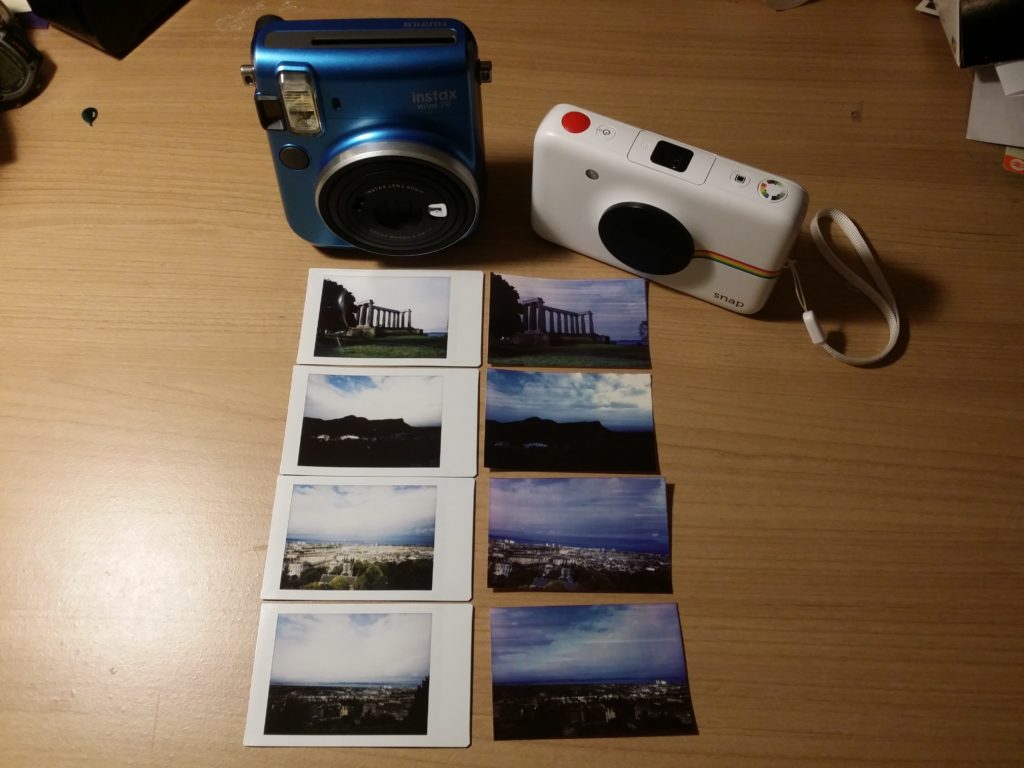
That’s the Instax on the left, and the Polaroid Snap on the right, with the results of some pics I took in Edinburgh a couple of weeks ago. I climbed up Calton Hill and shot a few with each camera, and what follows below is the results – first off the Instax, then a print from the Snap, followed by the digital file from the Snap.
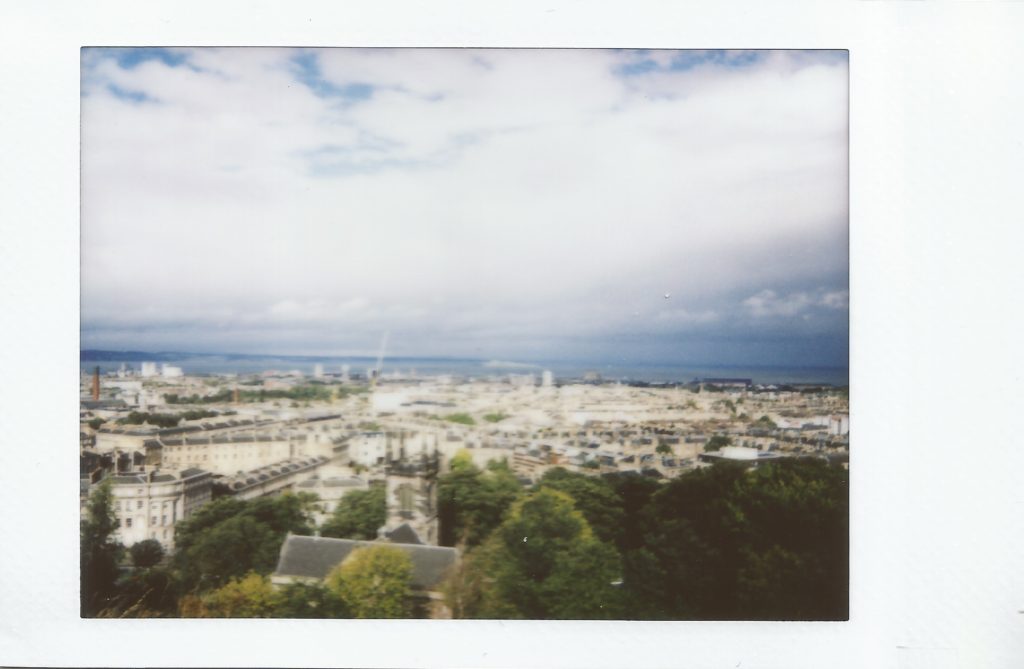 So this is a skyline shot from the Instax, and a fairly typical result from that camera – it has something of the traditional Polaroid look. Colours are quite bright, exposure not fantastic as bits are a bit washed out, but generally it’s not a bad little photo. Next up, here’s the print from the Snap…
So this is a skyline shot from the Instax, and a fairly typical result from that camera – it has something of the traditional Polaroid look. Colours are quite bright, exposure not fantastic as bits are a bit washed out, but generally it’s not a bad little photo. Next up, here’s the print from the Snap…
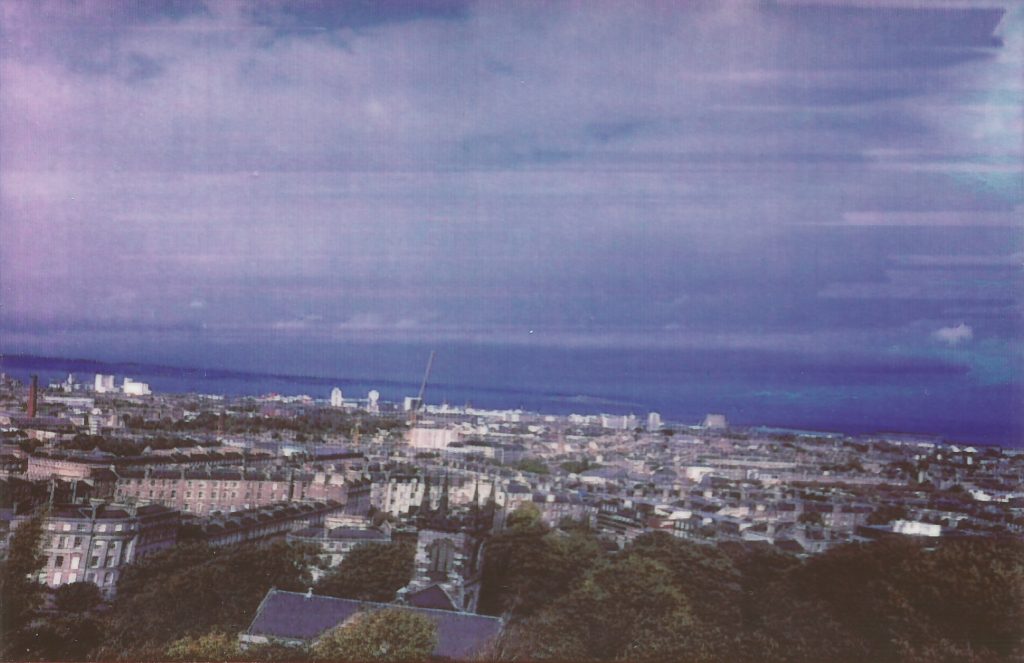 Oh dear. Not so good, is it? While some of the detail is a little better, look at the horrible colour cast and the streaky print quality. It’s wonky as well, because there’s quite a bad shutter lag. Is the digital image any better?
Oh dear. Not so good, is it? While some of the detail is a little better, look at the horrible colour cast and the streaky print quality. It’s wonky as well, because there’s quite a bad shutter lag. Is the digital image any better?
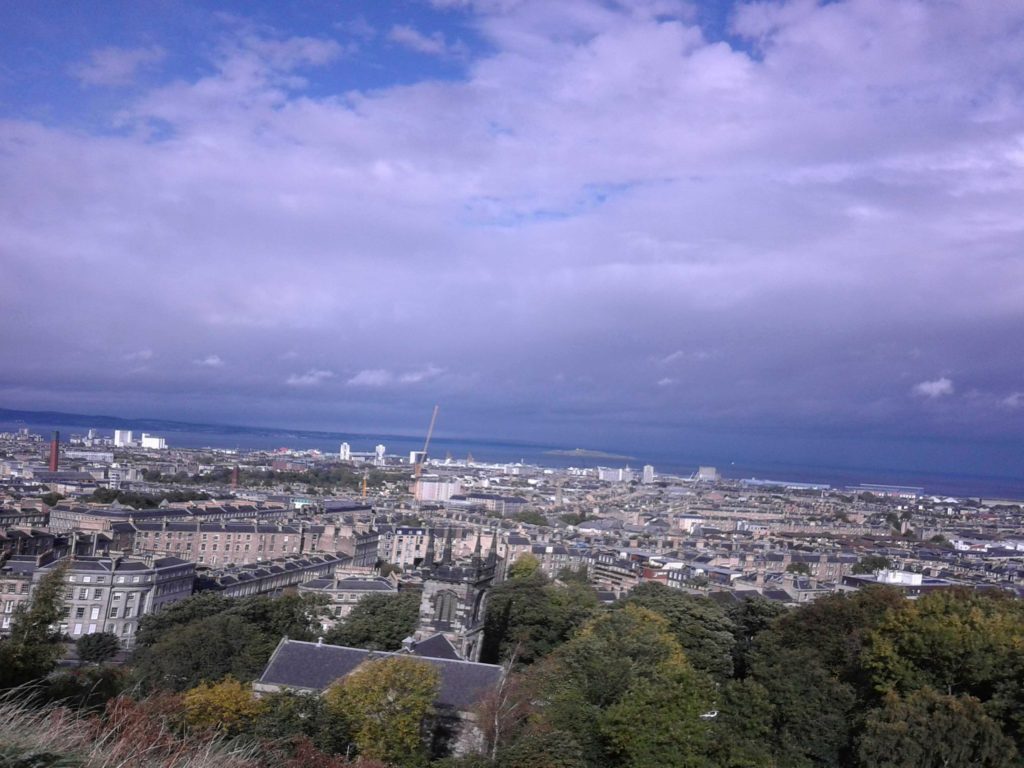
Ewww. Not really. Certainly not any better than you’d get from a very middling phonecam. Never mind, lets try another shot, so I’ll hand over to the Instax again.
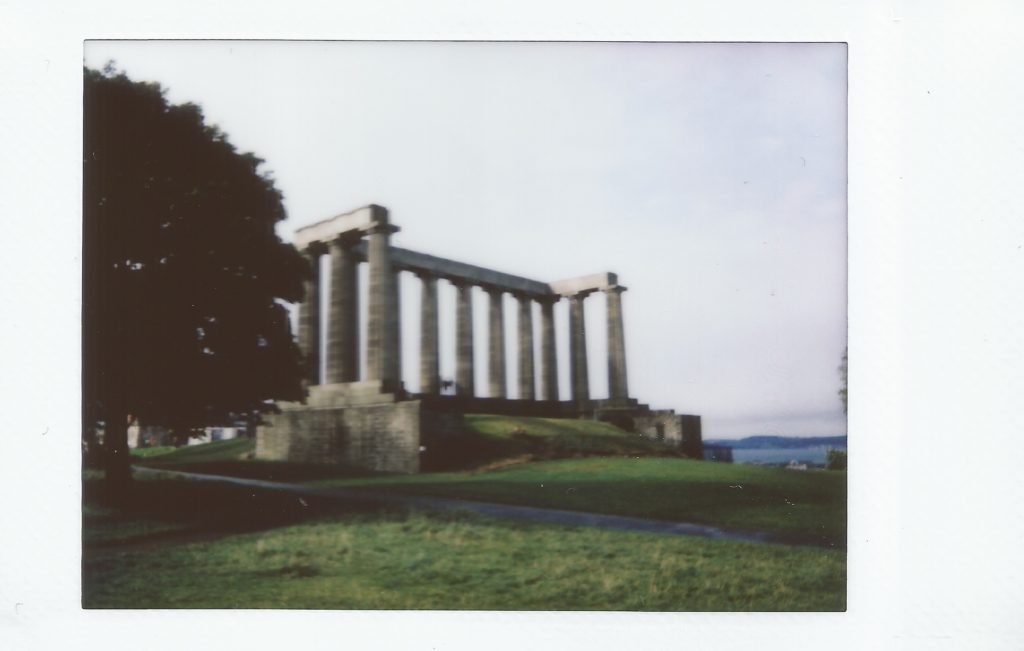 Again, a reasonable little effort by the Instax, although the tree on the left isn’t too well exposed and looks rather dark. Probably because I shot against a fairly large expanse of sky. Onto the print from the Snap…
Again, a reasonable little effort by the Instax, although the tree on the left isn’t too well exposed and looks rather dark. Probably because I shot against a fairly large expanse of sky. Onto the print from the Snap…
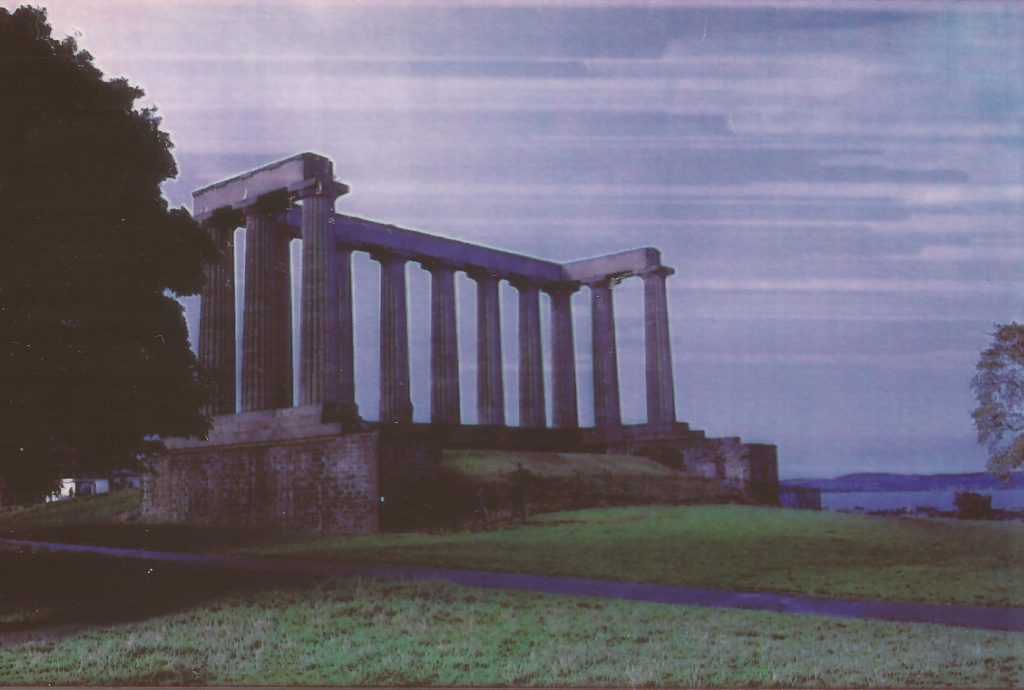 It looks like a very bad photocopy, doesn’t it? It certainly isn’t photo-quality, whatever it is. The sky looks like it was done with a dodgy felt-tip pen! The digital file came out like this…
It looks like a very bad photocopy, doesn’t it? It certainly isn’t photo-quality, whatever it is. The sky looks like it was done with a dodgy felt-tip pen! The digital file came out like this…
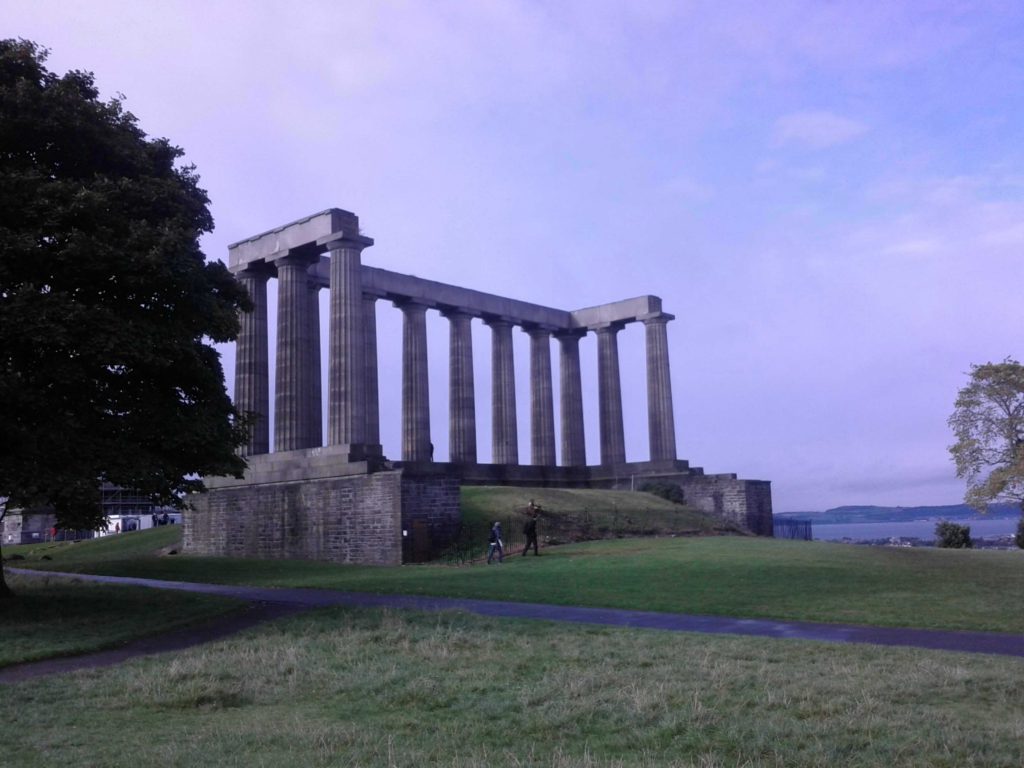
I suppose it’s OK, but that sky looks a bit strange. What the hell is that colour? Reasonable detail, I suppose, but that tree is still a bit on the dark side. Let’s try one more. Arthur’s Seat was looming large on the skyline, so I gave it a go with the Instax…
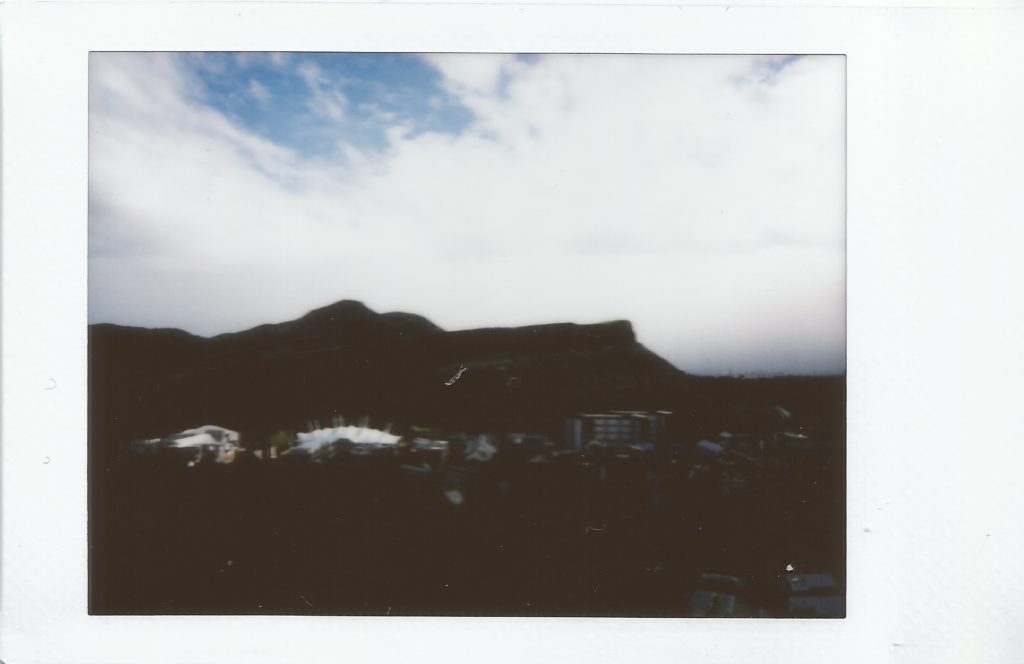 Oh – only the sky really looks much good there. Shame the hills themselves are so dark – it was actually quite a well-lit scene, but obviously a bit challenging for the Instax. Instant cameras are never going to achieve DSLR quality, after all. What did the Snap make of it?
Oh – only the sky really looks much good there. Shame the hills themselves are so dark – it was actually quite a well-lit scene, but obviously a bit challenging for the Instax. Instant cameras are never going to achieve DSLR quality, after all. What did the Snap make of it?
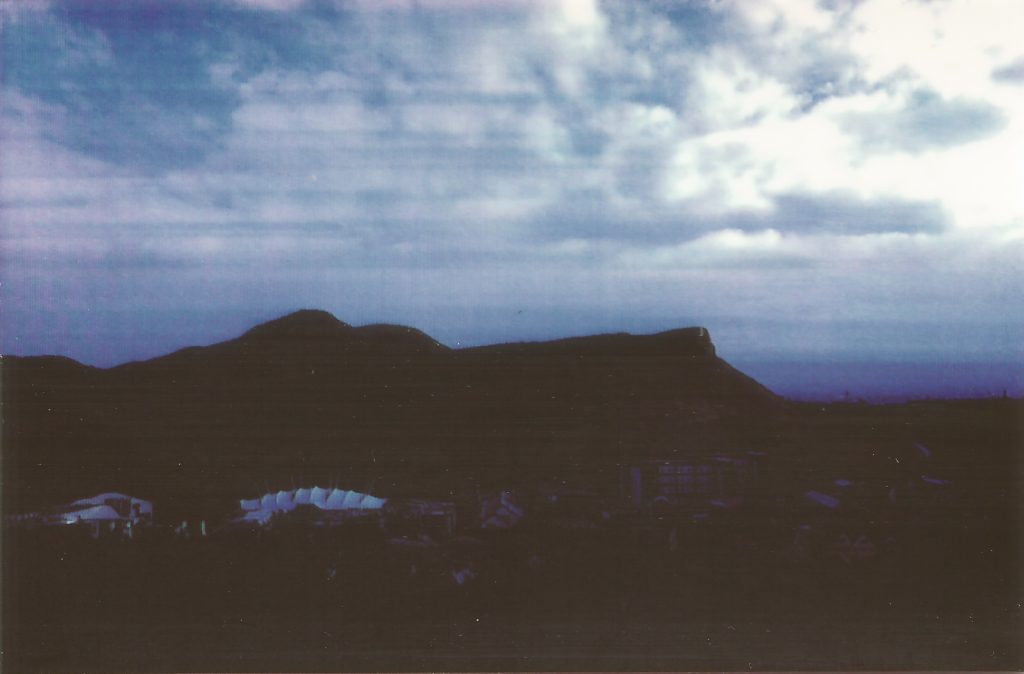 Ewww! All streaky again! Not good at all. Was the digital file up to much? Let’s see.
Ewww! All streaky again! Not good at all. Was the digital file up to much? Let’s see.
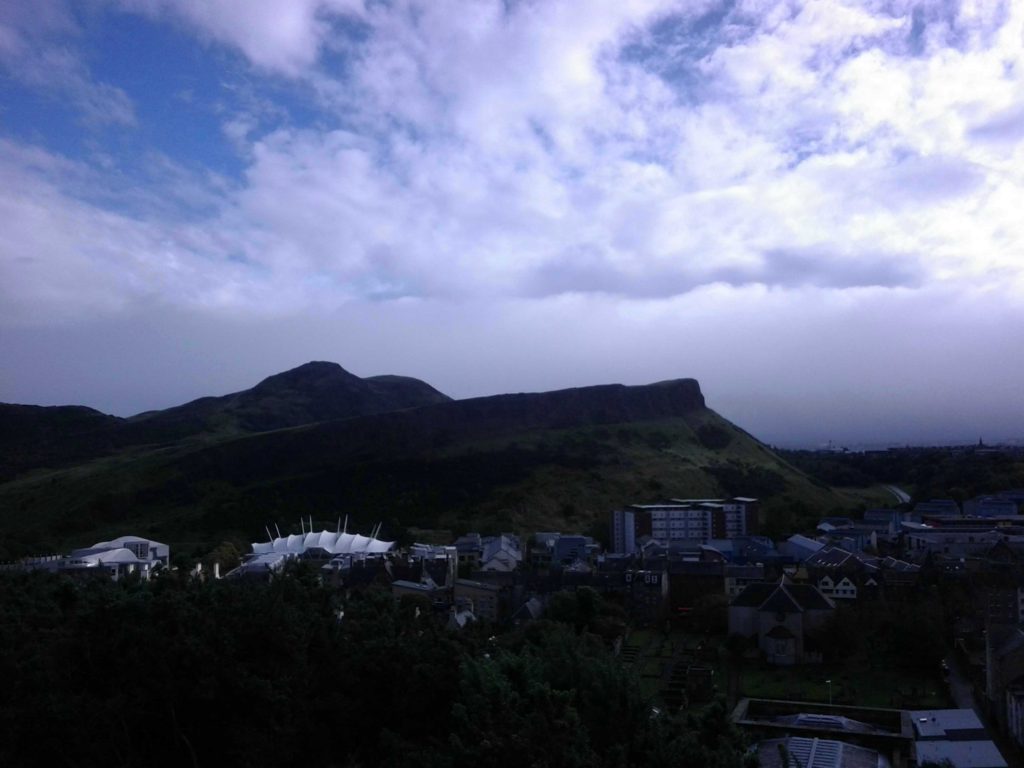
I suppose it’s OK – there’s a bit more detail there, and the clouds look quite good. But it’s nothing special. And sadly the Snap is an absolutely infuriating camera to use. The concept is great, but the execution is just awful.
The idea is it is supposed to act like an actual Polaroid – you shoot, get a one-off print, and that’s it. Although it’s essentially a digital camera, it has no screen and no controls beyond a couple of rudimentary filters. You can’t reprint a pic once you’ve taken it. The viewfinder is an awful little flip-up thing that switches the camera on when you raise it, but it always flips up in your bag and runs the battery down. It has a clever magnetic lens cap, that you always forget to remove, so you end up shooting black pictures. The concept is great, but the results are poor and it’s an infuriating little bastard of a camera that really isn’t worthy of the Polaroid name. I wanted to like it, but it’s just awful, to be honest. It’s really sad when a concept is good, but is really badly executed. It’s going back in the drawer.
Interestingly enough, Fuji have just released an Instax digital hybrid that looks somewhat better – it shoots square pics, and has a screen that lets you view before printing onto Instax film. You can print multiple copies and apply some rudimentary effects. It’s had some positive reviews, and it’ll be interesting to see what happens with it.
Anyway, just after I shot all of these, I read something about bit of a Polaroid revival. The old Polaroid company that made the ubiquitous cameras back in the eighties eventually went bust in 2008, and film was discontinued. A group called the Impossible Project took over the factory in the Netherlands and started making film again, but they had to reformulate it from scratch, and it wasn’t tremendously good. I shot a couple of early packs and wasn’t too impressed. Anyway…they’ve just been given the rights to use the Polaroid name again, and have even designed a new camera! It’s a bit pricy, but given the new interest in the film and the revival of the name, I got hold of an old Polaroid camera on Shpock…
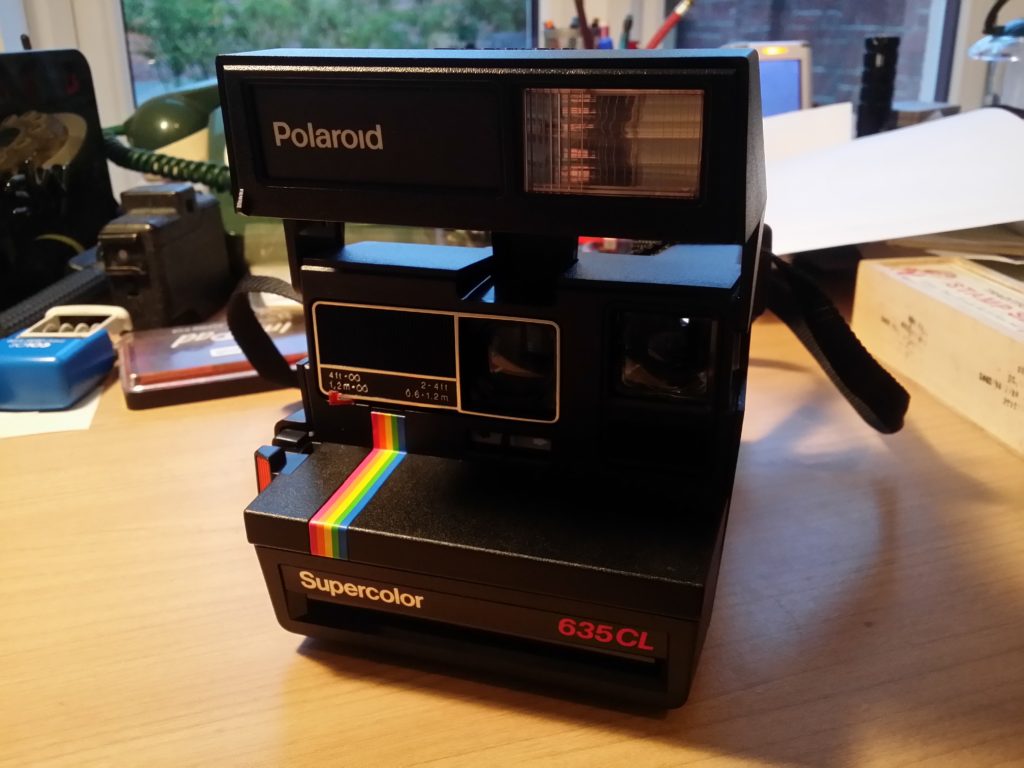
I paid £27.50 for it, which I consider rather a lot, but it was boxed, looked like it had never been used, and even still had the original guarantee card. Sadly, the hipster interest in these things has made them fetch silly money – Polaroid Originals are selling “refurbished” ones for £150! There’s bugger-all to refurbish – they’re really basic! All the complex stuff is in the film pack. To be honest, if you pay more than about a tenner for one of these, you can consider yourself fleeced. They made about a bazillion of them. Anyway…yesterday I shot a pack of the current Polaroid Originals Colour 600 film in the camera, along with some comparative Instax shots. Excuse me for not wanting to scan right now, here’s a couple of phone shots that give you the idea.
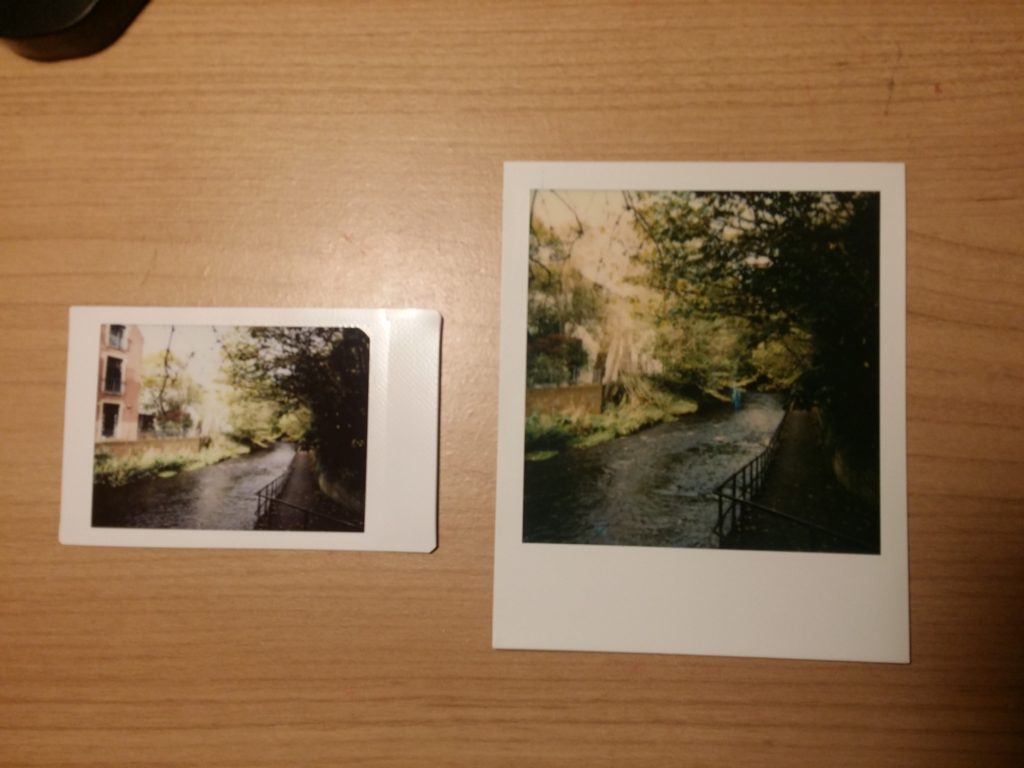 Hmm, that’s not a great shot, but…the Polaroid is a much bigger image, which is cool, but technically it’s softer, there’s less detail, and the colours are somewhat warmer and muddier. There’s also streaky undeveloped bits, and it takes AGES to develop compared to the Instax. Here’s another…
Hmm, that’s not a great shot, but…the Polaroid is a much bigger image, which is cool, but technically it’s softer, there’s less detail, and the colours are somewhat warmer and muddier. There’s also streaky undeveloped bits, and it takes AGES to develop compared to the Instax. Here’s another…
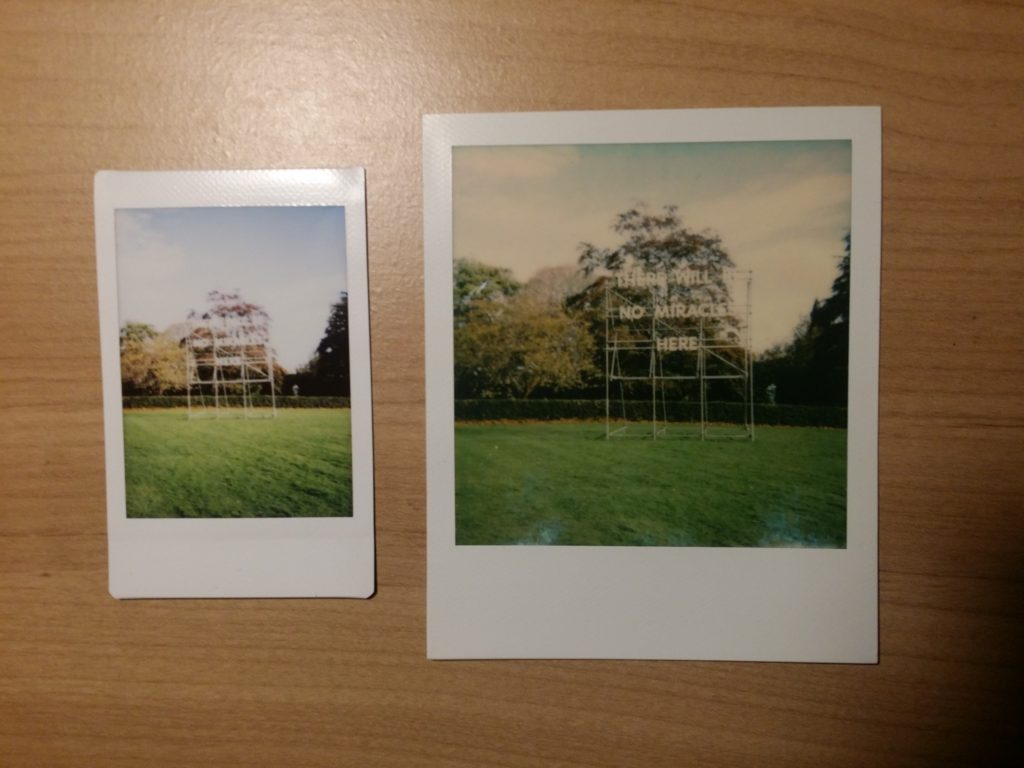 This is one of my favourite artworks at the Scottish National Gallery of Modern Art – THERE WILL BE NO MIRACLES HERE! Anyway, Instax was rather over-exposed, but generally the colours were more accurate. I think the Polaroid slightly wins out here – it’s got a vintage colour cast to it that gives it a certain charm, and the exposure is somewhat more accurate. Ultimately it’s hard to say whether one is better or worse than the other – I think Polaroid has the edge in character, but it’s very expensive to shoot – each picture costs over £2, whereas Instax shots cost about 75p. Still, having decided to consign the Polaroid Snap to the bin for being absolutely grim, the traditional Polaroid and the Instax are going to be part of my photography arsenal. Stay tuned for more not-tremendously-brilliant photo adventures!
This is one of my favourite artworks at the Scottish National Gallery of Modern Art – THERE WILL BE NO MIRACLES HERE! Anyway, Instax was rather over-exposed, but generally the colours were more accurate. I think the Polaroid slightly wins out here – it’s got a vintage colour cast to it that gives it a certain charm, and the exposure is somewhat more accurate. Ultimately it’s hard to say whether one is better or worse than the other – I think Polaroid has the edge in character, but it’s very expensive to shoot – each picture costs over £2, whereas Instax shots cost about 75p. Still, having decided to consign the Polaroid Snap to the bin for being absolutely grim, the traditional Polaroid and the Instax are going to be part of my photography arsenal. Stay tuned for more not-tremendously-brilliant photo adventures!